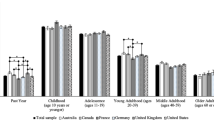Abstract
Over 30% of youth and adolescents have overweight or obesity, and health care providers are increasingly discussing weight-based health with these patients. Stigmatizing language in provider-patient communication about obesity is well documented and could be particularly detrimental to youth and adolescents. Although some research has examined preferences for weight-based terminology among adults, no studies have addressed these issues in youth populations. This study represents a preliminary and systematic investigation of weight-based language preferences among adolescents with overweight and obesity enrolled in a summer weight loss camp. Participants (N=50) indicated preferences for weight-based language and emotional responses to words that their family members used in reference to their body weight. Weight neutral terminology (‘weight’, ‘body mass index’) were most preferred, although some differences in word preferences emerged by the participants’ gender. Boys preferred having their weight described as ‘overweight’ and ‘heavy’, while girls preferred the word ‘curvy’. A large proportion of participants, particularly girls, reported experiencing sadness, shame, and embarrassment if parents used certain words to describe their body weight, which highlights the importance of considering the emotional impact of weight-based terminology. Providers may consider asking youth and adolescents for their preferences when discussing weight-based health.
This is a preview of subscription content, access via your institution
Access options
Subscribe to this journal
Receive 12 print issues and online access
$259.00 per year
only $21.58 per issue
Buy this article
- Purchase on Springer Link
- Instant access to full article PDF
Prices may be subject to local taxes which are calculated during checkout
Similar content being viewed by others
References
Puhl RM, Heuer CA . The stigma of obesity: a review and update. Obesity 2009; 17: 941–964.
Phelan SM, Burgess DJ, Yeazel MW, Hellerstedt WL, Griffin JM, van Ryn M . Impact of weight bias and stigma on quality of care and outcomes for patients with obesity. Obes Rev 2015; 16: 319–326.
Gudzune KA, Beach MC, Roter DL, Cooper LA . Physicians build less rapport with obese patients. Obesity 2013; 21: 2146–2152.
Puhl RM, Peterson JL, Luedicke J . Motivating or stigmatizing? Public perceptions of language about weight used by health providers. Int J Obes 2012; 37: 612–619.
Lydecker JA, Galbraith K, Ivezaj V, White MA, Barnes RD, Roberto CA et al. Words will never hurt me? Preferred terms for describing obesity and binge eating. Int J Clin Pract 2016; 70: 682–690.
Vartanian LR ‘Obese people’ vs ‘fat people’: Impact of group label on weight bias Eat Weight Disord 2010; 15: e195–e198.
Brochu PM, Esses VM . What’s in a name? the effects of the labels ‘fat’ versus ‘overweight’ on weight bias. J Appl Soc Psychol 2011; 41: 1981–2008.
Volger S, Vetter ML, Dougherty M, Panigrahi E, Egner R, Webb V et al. Patients’ preferred terms for describing their excess weight: Discussing obesity in clinical practice. Obesity 2012; 20: 147–150.
Dutton GR, Tan F, Perri MG, Stine CC, Dancer-Brown M, Goble M et al. What words should we use when discussing excess weight? J Am Board Fam Med 2010; 23: 606–613.
Wadden TA, Didie E . What’s in a name? Patients’ preferred terms for describing obesity. Obes Res 2003; 11: 1140–1146.
Swift JA, Choi E, Puhl RM, Glazebrook C . Talking about obesity with clients: Preferred terms and communication styles of UK pre-registration dieticians, doctors, and nurses. Pat Educ Couns 2013; 91: 186–191.
Puhl RM, Peterson JL, Luedicke J . Parental perceptions of weight terminology that providers use with youth. Pediatrics 2011; 128: e786–e793.
Knieriem SD, Kulchak A, Haemer M, Raghunath S, Martin C, Yang A et al. Latino parents’ perceptions of weight terminology used in pediatric weight counseling. Acad Pediatr 2015; 15: 210–217.
Bolling C, Crosby L, Boles R, Stark L . How pediatricians can improve diet and activity for overweight preschoolers: a qualitative study of personal attitudes. Acad Pediatr 2009; 9: 172–178.
Puhl RM, Peterson JL, Luedicke J . Weight-based victimization: A comprehensive assessment of weight-loss treatment-seeking youth. Pediatrics 2013; 131: e1–e9.
Ogden CL, Carroll MD, Kit BK, Flegal KM . Prevalence of obesity and trends in body mass index among US children and adolescents, 1999-2010. JAMA 2012; 307: 483–490.
Hansen AR, Duncan DT, Baidal JW, Hill A, Turner SC, Zhang J . An increasing trend in health-care professionals notifying children of unhealthy weight status: NHANES 1999-2014. Int J Obes 2016; 40: 1480–1485.
Eisenberg ME, Neumark-Sztainer D, Haines J, Wall M . Weight-teasing and emotional well-being in adolescents: Longitudinal findings from Project EAT. J Adolesc Health 2006; 38: 675–683.
Hunger JM, Tomiyama AJ . Weight labeling and obesity: a longitudinal study of girls aged 10 to 19 years. JAMA Pediatr 2014; 168: 579–580.
Bucchianeri MM, Eisenberg ME, Neumark-Sztainer D . Weightism, racism, classism, and sexism: Shared forms of harassment in adolescents. J Adolesc Health 2013; 53: 47–53.
Sherry B, Jefferds ME, Grummer-Strawn LM . Accuracy of adolescent self-report of height and weight in assessing overweight status: a literature review. Arch Pediatr Adolesc Med 2007; 161: 1154–1161.
Acknowledgements
This study was supported by a donation from the Rudd Foundation.
Author information
Authors and Affiliations
Corresponding author
Ethics declarations
Competing interests
The authors declare no conflict of interest.
Rights and permissions
About this article
Cite this article
Puhl, R., Himmelstein, M., Armstrong, S. et al. Adolescent preferences and reactions to language about body weight. Int J Obes 41, 1062–1065 (2017). https://doi.org/10.1038/ijo.2017.55
Received:
Revised:
Accepted:
Published:
Issue Date:
DOI: https://doi.org/10.1038/ijo.2017.55
This article is cited by
-
Development and validation of the body-related embarrassment scale (BREM)
Current Psychology (2024)
-
Challenges and Opportunities in Diagnosis and Management of Cardiometabolic Risk in Adolescents
Current Diabetes Reports (2023)
-
The scale matters: assessing body size with figure rating scales in a diverse sample of young adults
Eating and Weight Disorders - Studies on Anorexia, Bulimia and Obesity (2022)
-
The Use of Effective Language and Communication in the Management of Obesity: the Challenge for Healthcare Professionals
Current Obesity Reports (2021)
-
Weight-Talk Between Parents and Adolescents: A Systematic Review of Relationships with Health-Related and Psychosocial Outcomes
Adolescent Research Review (2021)


